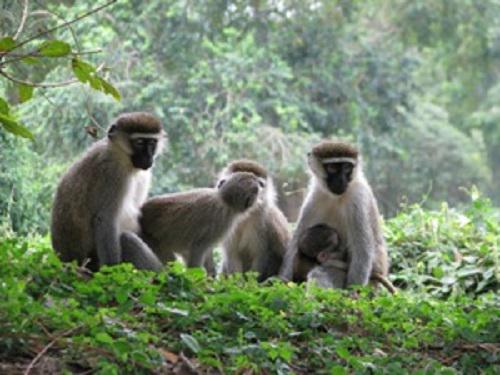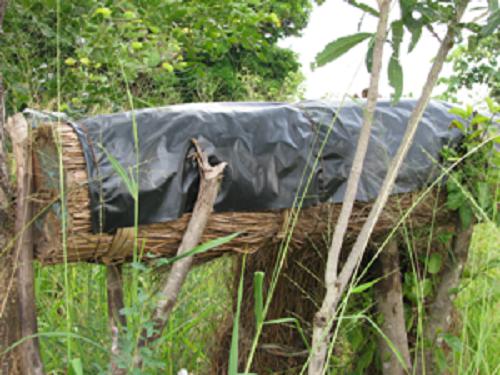Peter Lukwiya
Other projects
15 Oct 2009
Sustainable Community Conservation of Endangered L’Hoest Monkey Primates in Palabek-Kal Forest Reserve in Kitgum District, Uganda
The aim of this project is to promote community participation in the sustainable conservation of Palabek-Kal forest reserve and to evaluate the economic and environmental prospects for the forest reserve.

Primates at Ayuu site within Palabek kal forest reserve.
Kitgum district is located in northern Uganda and borders the Republic of the Sudan to the north, Kotido district to the east, Pader district in the south and Gulu district in the southwest. The district has Savannah woodland characterized by woody covers and grass layers.

Beehive.
Rural communities in Kitgum and Uganda in general do not see tree plantings and forests’ conservation as of significant importance and priority. Yet over 98% of the energy supply in Kitgum District is derived from fuelwood and charcoal. This demand for wood fuel and open land continues to intensify with increase in population, anthropogenic activities and poverty as a result of over 21 years of armed conflict and violence, coupled with low conservation education and lack of integration of local population into environmental management. Palabek- Kal forest reserve which consists of predominantly sheanut trees (Vitellaria Nilotica) and Accasia cambrelium is among the forest reserves in the district that is truly multi-purpose, highly valued not only for the economic and dietary value (e.g. source for cooking oil, honey production) but also as a source of traditional medicine and valuable ecosystem for wildlife.
Nevertheless, the forest reserve is being extensively destroyed to meet these demands (wood fuel and open land for agriculture) and/or source of income. Annually, especially during the dry months of Dec-Mar there is wide spread deliberate bush burnings in the district and this has posed yet another serious threat to the forest land in particular and environment in general. Consequently, these resulting environmental degradation, deforestation and loss of vegetative cover are leading to soil erosion and a decrease in soil fertility.
Active community involvement in sustainable conservation of Palabek-Kal forest reserve (environmental education) has environmental significance as this will invariably reverse the current speeding deforestation practices, improve deteriorating soil fertility, provide shade and protection against soil erosion and, provide valuable sources of livelihood opportunities for the rural poor people through sustainable use of a range of non-timber forest products such as honey thus, the rural people shall expand beekeeping practices, which has a key role to play as a tool in maintenance of local biodiversity and conservation of the environment. Similarly conservation of the xerophytic vegetation within forest land biologically enhances the existence of a large population of bees and nature as well as other wildlife currently facing extinction in the area.